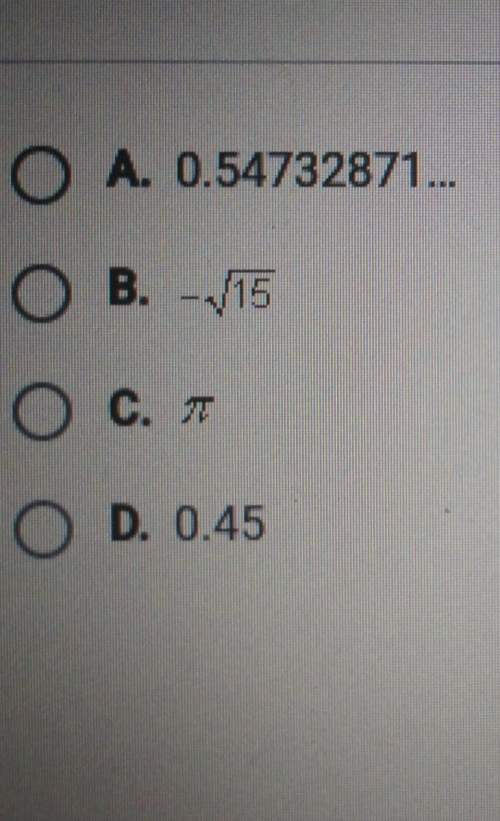
Mathematics, 04.12.2020 22:30 1tzM3
I'm begging you smart people will give brainlest and 20 points for some help
Aurora is planning to participate in an event at her school's field day that requires her to complete tasks at various stations in the fastest time possible. To prepare for the event, she is practicing and keeping track of her time to complete each station.
The x-coordinate is the station number, and the y-coordinate is the time in minutes since the start of the race that she completed the task.
(1, 3), (2, 6), (3, 12), (4, 24)
Part A: Is this data modeling an arithmetic sequence or a geometric sequence? Explain your answer. (2 points)
Part B: Use a recursive formula to determine the time she will complete station 5. Show your work. (4 points)
Part C: Use an explicit formula to find the time she will complete the 9th station. Show your work. (4 points)

Answers: 1


Other questions on the subject: Mathematics

Mathematics, 21.06.2019 16:30, cxttiemsp021
Which approach to the theory-and-research cycle does the following sequence reflect: (1) specific observations suggest generalizations, (2) generalizations produce a tentative theory, (3) the theory is tested through the formation of hypotheses, and (4) hypotheses may provide suggestions for additional observations?
Answers: 1

Mathematics, 21.06.2019 22:40, btaylor1179
Awoman has 14 different shirts: 10 white shirts and 4 red shirts. if she randomly chooses 2 shirts to take with her on vacation, then what is the probability that she will choose two white shirts? show your answer in fraction and percent, round to the nearest whole percent.
Answers: 3


Mathematics, 22.06.2019 03:00, kittenlover5031
In this problem, we explore the effect on the standard deviation of multiplying each data value in a data set by the same constant. consider the data set 14, 6, 8, 15, 15. (a) use the defining formula, the computation formula, or a calculator to compute s. (round your answer to one decimal place.) s = 4.28 (b) multiply each data value by 3 to obtain the new data set 42, 18, 24, 45, 45. compute s. (round your answer to one decimal place.) s = 12.83 (c) compare the results of parts (a) and (b). in general, how does the standard deviation change if each data value is multiplied by a constant c? multiplying each data value by the same constant c results in the standard deviation remaining the same. multiplying each data value by the same constant c results in the standard deviation being |c| times as large. multiplying each data value by the same constant c results in the standard deviation increasing by c units. multiplying each data value by the same constant c results in the standard deviation being |c| times smaller. (d) you recorded the weekly distances you bicycled in miles and computed the standard deviation to be s = 3.8 miles. your friend wants to know the standard deviation in kilometers. do you need to redo all the calculations? yes no given 1 mile ≠1.6 kilometers, what is the standard deviation in kilometers? (enter your answer to two decimal places.)
Answers: 1
You know the right answer?
I'm begging you smart people will give brainlest and 20 points for some help
Aurora is planning to...
Questions in other subjects:

English, 13.03.2021 14:00

English, 13.03.2021 14:00


History, 13.03.2021 14:00

Physics, 13.03.2021 14:00



Mathematics, 13.03.2021 14:00


Mathematics, 13.03.2021 14:00




